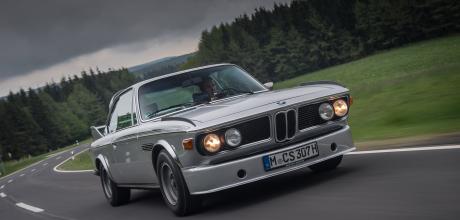1973 BMW 3.0 CSL with Racing Kit E9
The Original… and best? The E9CSL is undoubtedly one of BMW’s finest creations and a direct result of the company’s desire to win on track.
Words: Bob Harper
Photos: BMW
THE CLASSIC ICON PROFILED1973 BMW 3.0 CSL with Racing Kit E9
We revisit the first car to wear the iconic CSL badge, the E9, learning about its development history and its evolution.
Best BMW ever? The case could be made of a whole host of brilliant machines, but cars like the E30 M3, the pre-war 328 and the company’s sole mid-engined supercar, the M1, will more than likely be up there in most folks’ shortlists. And the common thread that runs through these icons? Their very existence was born out of a desire to win races, and that’s also true of the first BMW to wear the Coup. Sport Lightweight moniker, the glorious E9 CSL.
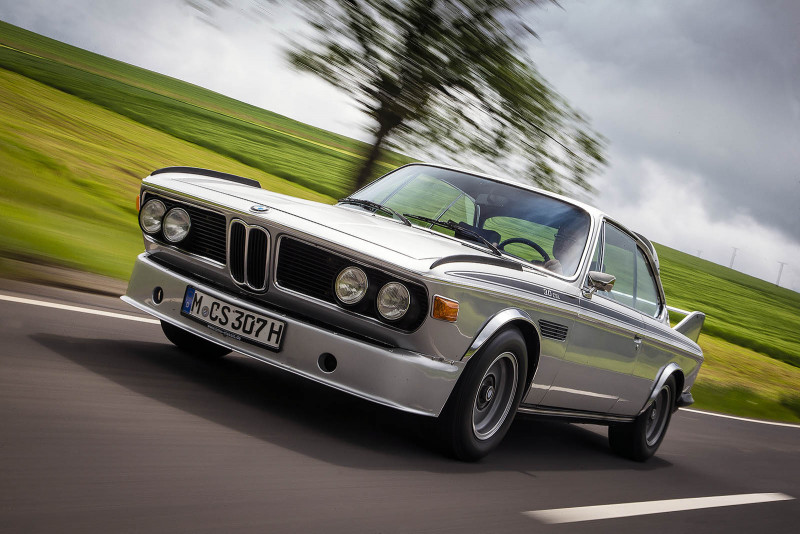

While the E9 CSL has legendary status within the pantheon of BMW greats, it’s interesting to have a look at its roots as it didn’t have a particularly exciting genesis. Back in the early ’60s, BMW was keen to expand its model line-up and launched the 2000C/CS Coup., which was based on the hugely successful Neue Klasse saloon. Initially, it sold well, but with only a 2.0- litre four-cylinder to power it, there wasn’t the performance to back up its looks.
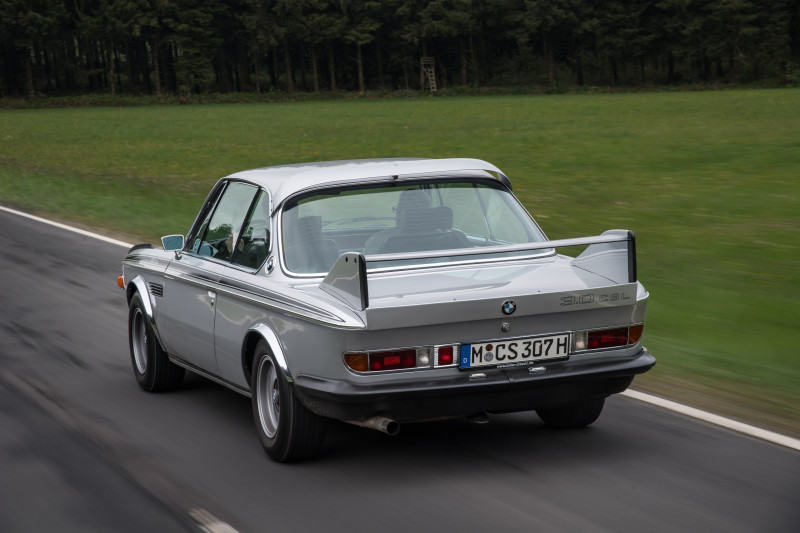
BMW responded by having its design chief, Wilhelm Hofmeister, rework his original design and pen a car that would eventually become a legend in its own lifetime and an automotive icon in years to come. Although he carried over much of the 2000CS’s aristocratic, refined lines and proportions to the 2800CS, Hofmeister’s brief was to imbue his new coup. with a more aggressive and purposeful aesthetic worthy of a flagship model. The 2000’s slightly gawky wraparound headlight design was dropped in favour of the matt black grille and twin headlight assembly that would become an enduring BMW hallmark for years to come.
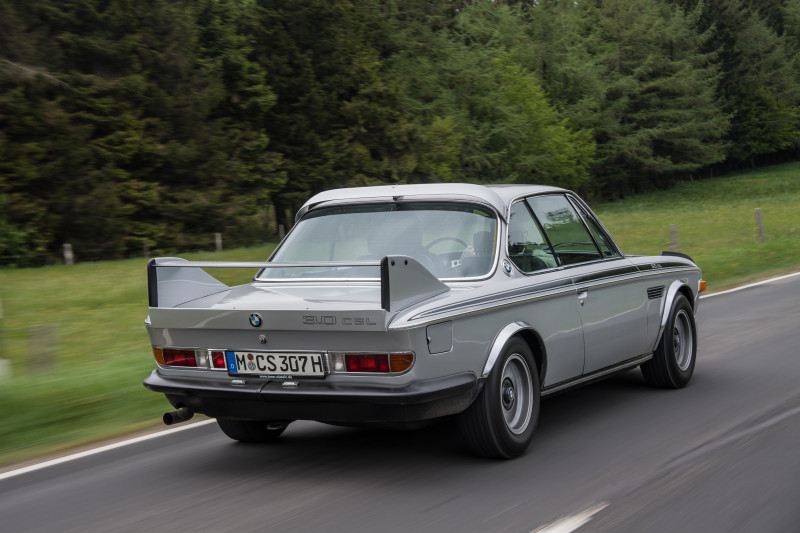
The bonnet lengthened by 3” to accommodate the 2.8-litre straight-six carried over from the E3 Saloon, and all four wheel arches were flared to house larger 6x14” five-spoke cast alloy rims, affording the CS a more coiled and purposeful stance. With Munich working flat out to keep up with demand for its existing line-up, Karmann retained its contract to manufacture BMW’s coupes. Parts and running gear were transported 600 miles from Munich to Osnabrück, where they were fitted to Hofmeister’s redesigned bodyshells. With the first 2800CSs rolling off the lines in December 1968, German customers began to take delivery of the new coup. in the spring of 1969, while in Britain, eager enthusiasts were forced to wait until October to get their hands on the new GT. To justify the CS’s £5345 price tag to British customers, electric windows replaced the standard-fitment wind-up items on all UK cars upon arrival in the country.
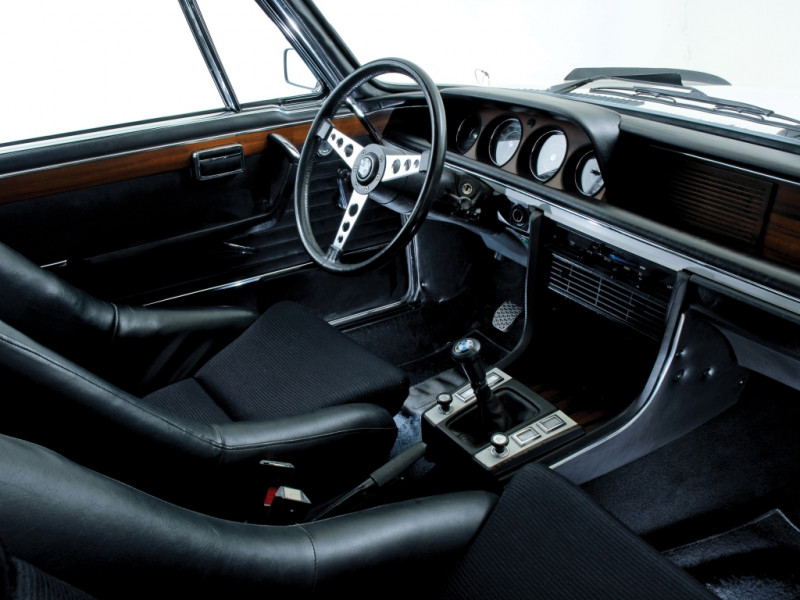
Although priced in the same ballpark as the Ferrari Dino 246 and Porsche 911, road testers of the day didn’t quite feel that the CS could match them pound-for-pound in the performance stakes. Being more of a gentleman’s tourer than a thoroughbred sports car, the CS was naturally at a disadvantage, but it was certainly no slouch. While sales were generally going well, BMW’s top brass was keen for BMW to become a fully paid-up member of the win on Sunday, sell on Monday club. It keenly followed the antics of the BMW tuning firms on track, and it was Alpina, then still a tuning company, who ably demonstrated to BMW the potential of the CS Coupe.
At the 1969 Spa 24-Hours, it campaigned a 2800CS that was almost in showroom trim, bar an engine that the wizards at Buchloe had breathed on, and it came home a very creditable ninth, despite having virtually standard brakes and suspension. Buoyed by its success, the company returned to Spa in 1970 with a far more developed version of the CS and won it outright with the driver pairing of Huber and Kelleners. While it wasn’t the fastest machine there, it was durable and, over 24 hours, was fast enough to win.
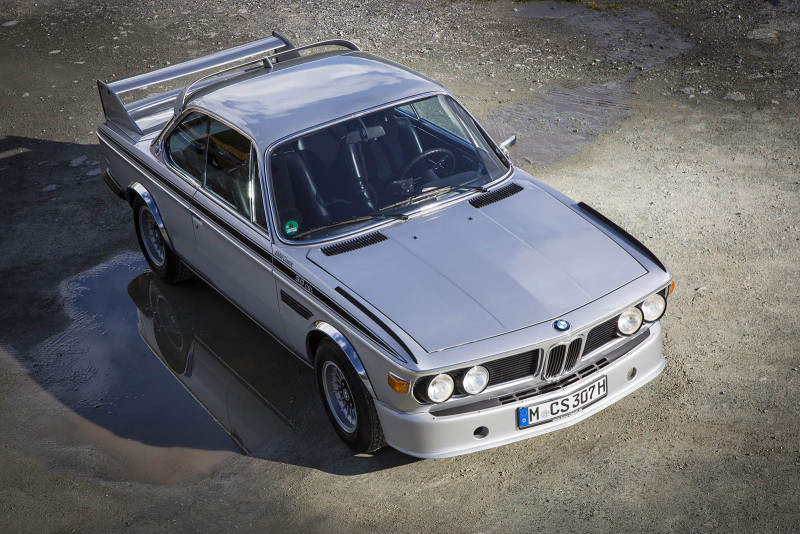
In the early part of the 1970s, the Ford Capri RS was the machine to beat in the ETCC, and as the ageing 2002 wouldn’t be eligible to run in the same class, it was obvious that the CS Coup. would have to take on the Ford. If the big coup. was to really succeed on track, though, more power and better aerodynamics were required. In road trim, the Ford came in just under a tonne, but by comparison, the CS Coup. was a rather lardy 1360kg – a serious diet was required.
Tuners such as Schnitzer and Alpina had gone about as far as they could with the standard production car, but if a significant change was to be made to the CS, it would have to be done by the manufacturer rather than by its eager tuners.
The arrival of Jochen Neerpasch and Martin Braungart, who were poached from the Ford Competition department to head up BMW Motorsport in 1972, sparked the fire that was needed for the CS racing project to really get going. The first CSLs (L for Lightweight) were based on the 3.0 CS, which had replaced the 2800CS in mid-1971, and had a carburetted 2985cc engine that developed 180hp. They had aluminium doors, boot lid and bonnet, along with thinner gauge steel and Plexiglass windows to see a dramatic 200kg lopped off the CS’s not inconsiderable bulk.
Fripperies were dropped – no more power steering or electric windows (not even the rear quarters opened), any excess sound deadening was cast aside, and Scheel bucket seats replaced the standard fitment adjustable items. These first CSLs rolled off the line as lefthookers, and all were built around the carburetted 2985cc engine, with just 169 being produced from May 1971 to July 1972.
In late 1971 the 3.0 CS became the 3.0 CSi with Bosch injection and the second generation of CSLs that hit the streets in the latter part of 1972 adopted fuel injection and were good for 200hp in road-going trim. There was also a very modest increase in capacity to 3003cc, which allowed the CSLs to compete with the Ford RS3100 Capris in Class 2 of the ETCC. While European specification versions of the second generation of CSL retained their lightweight credentials when the first of these cars arrived in Britain in October, BMW’s UK importer thought it necessary to re-equip the CSLs with everything that was stripped out in the first place. Dubbed the ‘City Pack’, glass replaced Plexiglas, chrome bumpers replaced the lightweight plastic items and luxuries such as electric windows and sound deadening were reinstated.
Specified with power steering and a radio/cartridge player, the RHD 3003cc CSLs cost a whopping £7846. Only 500 right-hand drive cars were ever produced. Despite the capacity increase and the diet program, the racing CSLs were still losing out to the lighter, and consequently nimbler, Capri, and this brings us to the arrival of the iconic ‘Batmobile’, the car that would stamp its authority on the ETCC like no other. While Neerpasch and Braungart could only stand and watch the Fords dominate in 1972, behind the scenes, frantic work was continuing on the next iteration of the CSL.
In the space of four months, Braungart and his small team had drawn everything and ordered it to be made – new front suspension, steel hubs, new castings for the MacPherson struts and centre-locking for the wheels, completely new steel trailing arms to accommodate much bigger wheels and a complete powertrain including a Getrag dog-leg five-speed to replace the previous ZF unit. Engine supremo Paul Rosche had worked his magic on the engine, and a 3.3- litre version of the big ’six that ran to about 350hp on Kugelfischer injection was homologated along with the rest of the CSL’s upgrades on 1 January 1973.
The season started poorly, though, with engine failures at Monza and Salzburgring, and to prove the mechanical package BMW Motorsport entered two CSLs for the Le Mans 24-Hour race, at which Hezemans and Quester came in 11th overall and first in class, beating the Capris in the process.
However, the CSL still suffered from instability at speed and it was now, in the middle of the 1973 season, that Neerpasch played his ace – homologating the wing kit that gave the car its Batmobile moniker. He discovered that evolutionary changes were allowed to existing models, so he hatched a plan to make up for the car’s high-speed instability.
Thus the rear wing, roof spoiler and front wing splitters joined the regular CSL’s front spoiler assembly. Despite being cobbled together in a matter of days, they were devastatingly effective – 60kg of rear lift at 124mph was converted into 30kg of extra downforce. Overnight the CSL was transformed from being a good race car to a virtually unbeatable one. The CSL, now affectionately christened the Batmobile, would go on to utterly dominate the European Touring Car Championship (ETCC) during the 1970s. It won the title every year from 1973 to 1979, bar a blip in ’74 when it was pipped to the post by the Zakspeed Ford Escort. To still be competitive in the latter part of the 1970s – 11 years after the E9 Coup. was first brought to market and a staggering four years after it ceased production – only goes to demonstrate what a superb job BMW, and its tuning partners Schnitzer and Alpina, did with the car. Of course, the racing aero kit did still need to be homologated, though, and, as a result, the final two batches of CSLs were manufactured in two distinct production runs – the first from July to October 1973 and the second from January 1974 to October 1975. 110 were made in the first batch and 57 in the second. While the body, steering, brakes, interior and suspension were identical to the normal CSL, the Batmobiles had a new version of the big ’six that had a capacity increase to 3153cc. This was primarily to homologate its 84mm stroke for the 3.5-litre racing unit, but the upside for the road car was a horsepower increase to 206hp at 5600rpm and a torque hike to 215lb ft at 4200rpm.
While the Batmobile shared the deep front air dam with the regular CSL, it also featured black rubber guides along the top of the front wings, and the boot lid featured a plastic rear spoiler with a rubber lip. The boot lid itself was no longer constructed of alloy, though – it was replaced with a steel item – as a stronger base was required for the humongous rear spoiler. The last piece of the aerodynamic jigsaw was the aerofoil that fitted above the rear screen to channel air down towards the spoiler. Due to a conflict with various European laws, the large boot spoiler and rear aerofoil were supplied as a ‘racing kit’, and were left in the car’s boot to be fitted by owners. As a result, it’s not actually known how many Batmobiles ended up sporting their full aero kit.
While the CSL was the result of painstaking work to make it a winner on-track, or perhaps because of that painstaking work, the CSL also makes a The CSL still has masses of road presence today, and it’s a true BMW performance icon stunning road car. The cockpit doesn’t give away the fact that this is, at heart, a thinly disguised racer – there’s still a wood dash – but the Scheel sports seats grip you well and hint at the cornering potential within. Getting underway requires muscles – there’s no power steering – but once above walking pace the steering lightens, and while it’s slightly vague around the straight ahead, once you have some lock applied, it firms up nicely and chatters to you through the delicate wheel rim.
While it’s not a hugely quick machine by today’s standards, it still feels quick, in part thanks to that superb straight-six – not overly powerful but super tuneful – and with plenty of low down urge before really taking off in the 4000- 5500rpm range. While the brakes were fine for their time, they do take a bit of a shove for those of us used to over-servoed modern setups, and, of course, ABS and traction control systems hadn’t yet found their way onto road cars in the mid-’70s. The best bit, though, is the superb chassis, which lets you know exactly what’s going on underneath you through the steering wheel and those hip-hugging seats. It has a wonderful poise to it and feels like a perfectly honed piece of precision machinery which is exactly what it is.
Whether the CSL is the finest machine to have emerged from BMW will be open to debate, but it did much to cement BMW Motorsport’s reputation in its early days and set a brilliant blueprint for subsequent machinery. Classy looks, stunning straight-six, sublime chassis, and a competition pedigree to die for… yup, the CSL has it all.
The CSL still has masses of road presence today, and it’s a true BMW performance icon. Six-cylinder M30 grew to 3.2-litres in the Batmobile, making 206hp. The early CSLs were far more discreet, but underneath they were still lightweight sports cars.
TECHNICAL DATA BMW E9 CSL ‘Batmobile’
- ENGINE: 3.2-litre straight-six M30B32
- MAX POWER: 206hp @ 5600rpm
- MAX TORQUE: 215lb ft @ 4200rpm
- TOP SPEED: 138mph
- 0-62MPH: 6.8 seconds
- ECONOMY: 21mpg
- PRICE: £9000 (1974)
The Batmobile aero additions turned the CSL into an unstoppable race-winning machine. The cabin still had an air of luxury about it, but the Scheel bucket seats let you know this was a proper sports car. 14” alloy wheels were standard.


